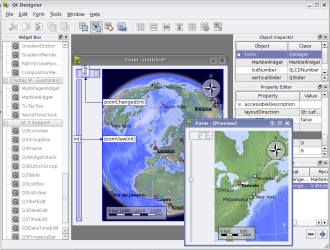the first screencast shows how plasmoids respond to constraints, such as FormFactor, which allows the presentation layer and the plasmoids to co-operate on display issues in an efficient yet flexible manner with only loose coupling between the various components. in the above screencast, i show how FormFactor (one of the constraint types) can be used by plasmoids to alter their appearance so it is appropriate for where they are being displayed.
the second screencast is also about plasmoids, but this time about how we get data to visualizations on-screen. in plasma, we've created a division between data model (DataEngine) and visualization (QGraphicsItem) and genericized it. this allows people from the three disciplines of software development: programming, art and usability, to apply their skills without having to understand the other skills or interfere with the efforts of those who do. it also allows us to very easily connect any given visualization to any given data source in a convenient and safe manner. the screencast above shows how plasmoids use DataEngines.
 KDE Commit-Digest
KDE Commit-Digest
